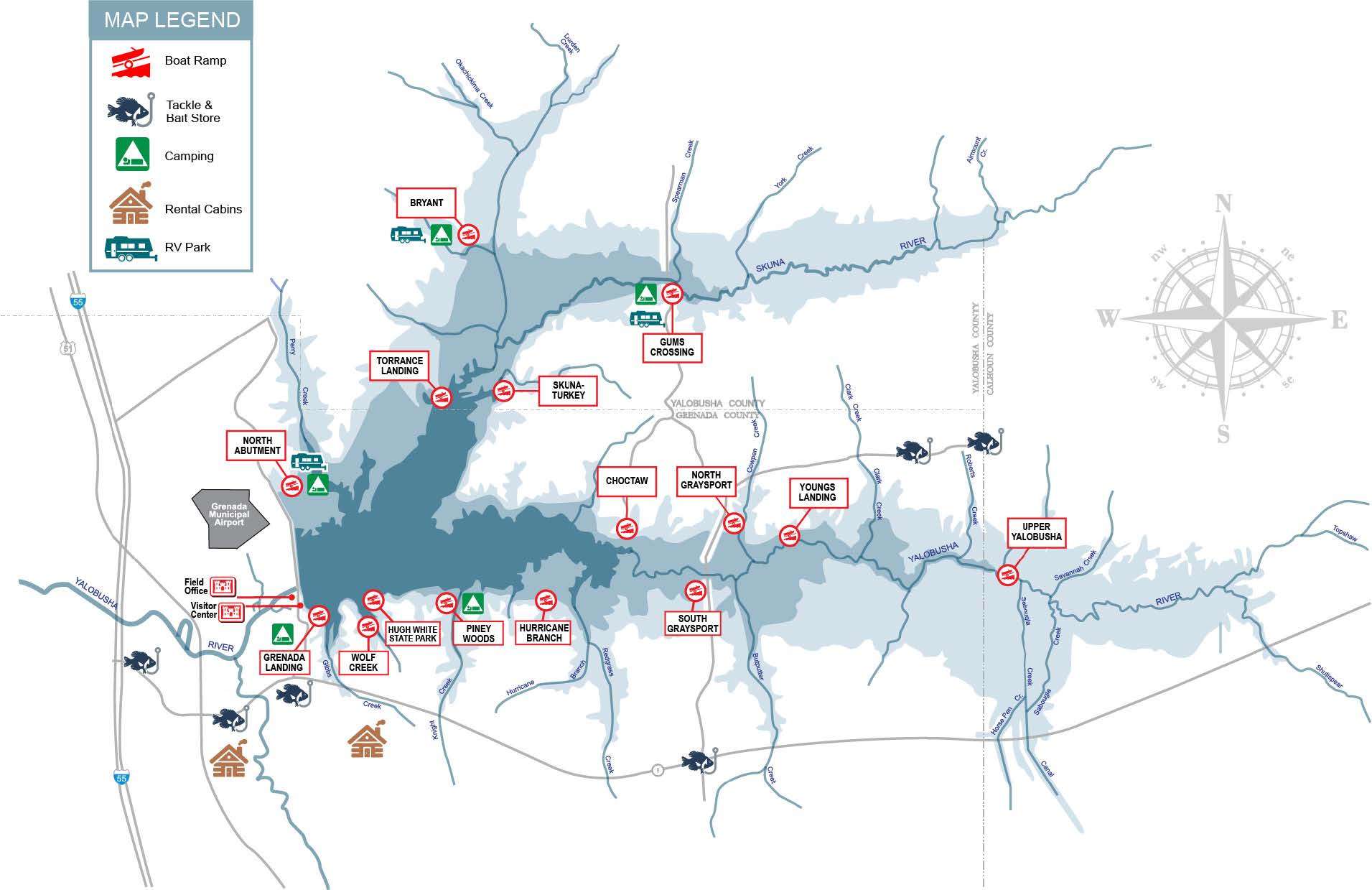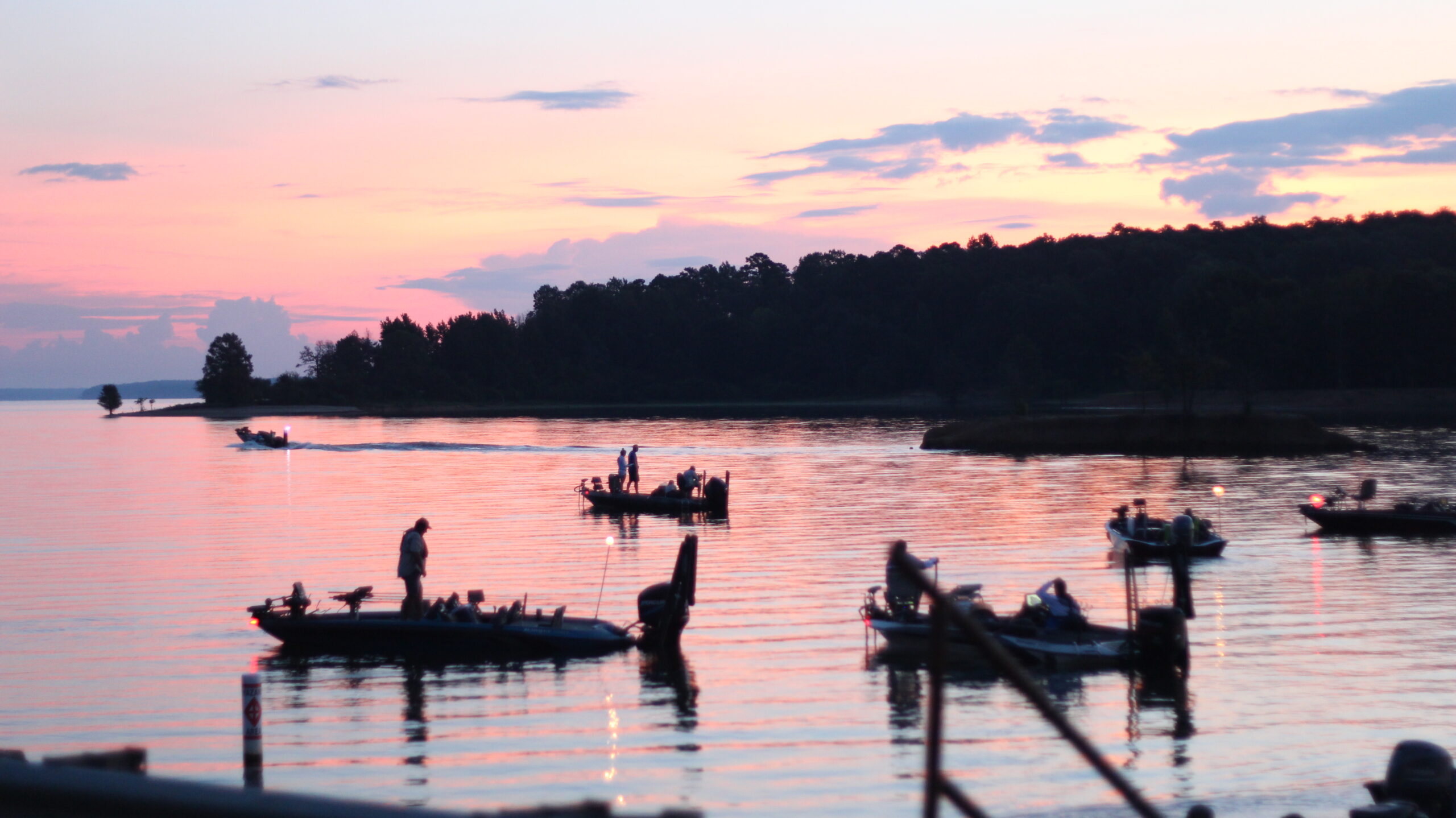Ever wondered what's going on with Grenada Lake's water level? Well, you're not alone. This man-made marvel in Mississippi has been a hub of activity, recreation, and natural beauty for decades. But lately, there's been a lot of buzz about its water levels – and for good reason. Whether you're a local resident, a fishing enthusiast, or just someone curious about the environment, knowing the ins and outs of Grenada Lake water level is a must.
Now, picture this: a serene lake surrounded by lush greenery, with boats gliding smoothly across its surface. That's Grenada Lake in its prime. But when the water level starts to dip—or even rise unexpectedly—it affects everything from boating to fishing and even the local ecosystem. So, let's dive into the nitty-gritty of Grenada Lake's water levels and uncover what's really going on.
Here's the deal: Grenada Lake isn't just any lake. It's part of the U.S. Army Corps of Engineers' system, meaning its water levels are carefully managed. But Mother Nature doesn't always play by the rules, and that's where things can get interesting. So, buckle up because we're about to break it all down for you in a way that's easy to understand and packed with useful info.
Read also:Remoteiot Vpc Review Raspberry Pi The Ultimate Guide For 2023
Before we jump into the deep end, let's take a quick peek at the table of contents to see where we're headed:
- Biography of Grenada Lake
- Impact of Grenada Lake Water Level
- Current Status of Water Levels
- How Water Levels Are Managed
- Factors Affecting Grenada Lake Water Levels
- Seasonal Changes in Water Levels
- Environmental Effects of Fluctuating Water Levels
- Impact on Recreation and Tourism
- Future Outlook for Grenada Lake Water Levels
- Tips for Monitoring Water Levels
Biography of Grenada Lake
Grenada Lake wasn't always a lake—at least not in the natural sense. It was created in the 1950s by damming the Yalobusha River, forming one of the largest reservoirs in Mississippi. But it's not just about size; Grenada Lake is a hub of activity, supporting everything from agriculture to recreation.
Key Facts About Grenada Lake
Let’s break it down with some quick facts:
- Year Established: 1954
- Surface Area: Approximately 35,500 acres
- Purpose: Flood control, recreation, and water supply
- Location: Grenada County, Mississippi
But here's the kicker: Grenada Lake isn't just about its size. It's about the community it supports and the ecosystem it sustains. And that brings us to the heart of the matter—its water levels.
Impact of Grenada Lake Water Level
So, why does the water level in Grenada Lake matter so much? Well, it's all about balance. The lake serves multiple purposes, and each one relies on having the right amount of water at the right time. Here's how it breaks down:
1. Flood Control
Grenada Lake was designed to manage flooding in the Yalobusha River basin. When water levels are too high, it can spell trouble for nearby towns and farmland. On the flip side, if the water level drops too low, it can disrupt the lake's ability to hold back floodwaters when needed.
Read also:Elizabeth Carlisle The Rising Star Whos Capturing Hearts
2. Recreation
Boating, fishing, and swimming—all the fun stuff—depend on having enough water. If the lake gets too shallow, it can limit access to certain areas and even close down marinas. Not ideal for those looking to spend a day on the water, right?
3. Ecosystem Health
The wildlife around Grenada Lake thrives on a stable water level. Fish, birds, and plants all rely on the lake's environment to survive. When water levels fluctuate too much, it can throw the whole ecosystem out of whack.
Current Status of Water Levels
As of the latest reports, Grenada Lake's water level has been hovering around its normal range, but that can change quickly depending on weather patterns and management strategies. The U.S. Army Corps of Engineers keeps a close eye on these levels, adjusting them as needed to maintain balance.
Here's a quick snapshot of the current situation:
- Normal Pool Elevation: 240 feet above sea level
- Current Elevation: 238 feet above sea level (slightly below normal)
- Reason for Fluctuation: Recent dry spells combined with increased water usage
But don't panic yet. These fluctuations are often temporary, and the lake usually bounces back with some good rainfall.
How Water Levels Are Managed
Managing Grenada Lake's water levels is a delicate dance between science and nature. The U.S. Army Corps of Engineers uses a combination of tools and techniques to keep things in check:
1. Dams and Spillways
The dam at Grenada Lake is the main tool for controlling water levels. By adjusting the gates, engineers can release water during high levels or hold it back when levels are low.
2. Weather Monitoring
Keeping tabs on rainfall, snowmelt, and evaporation rates helps predict how water levels might change. This allows for proactive adjustments rather than reactive ones.
3. Public Input
Believe it or not, the community plays a role too. Local feedback and data from nearby residents help inform decisions about water management.
Factors Affecting Grenada Lake Water Levels
While the U.S. Army Corps of Engineers does its best to manage water levels, there are several factors beyond their control:
1. Rainfall
This one's a no-brainer. Too much rain can cause water levels to rise, while too little can lead to drought conditions.
2. Evaporation
Especially during the summer months, evaporation can significantly impact water levels. Hot temperatures mean more water turning into vapor, leaving less in the lake.
3. Human Activity
From agriculture to urban development, human activities can affect water levels both directly and indirectly. For example, increased water usage during dry spells can exacerbate low water conditions.
Seasonal Changes in Water Levels
Grenada Lake experiences natural fluctuations throughout the year, and understanding these patterns can help us better anticipate changes:
Spring: Rising Waters
As snow melts and spring rains arrive, water levels tend to rise. This is often the time when the lake is at its fullest.
Summer: Steady or Declining
With hotter temperatures and less rainfall, water levels may start to decline. This is when careful management becomes crucial.
Fall and Winter: Stabilization
As the weather cools and rainfall picks up again, water levels often stabilize, preparing for the cycle to begin anew.
Environmental Effects of Fluctuating Water Levels
When water levels in Grenada Lake fluctuate, it can have a ripple effect on the environment:
1. Fish Population
Changes in water levels can impact fish spawning and habitat. Too little water can reduce available spawning areas, while too much can flood them.
2. Vegetation
Plants around the lake's edges rely on a stable water level. Fluctuations can lead to erosion and loss of vegetation, affecting the entire ecosystem.
3. Wildlife
From birds to mammals, the wildlife around Grenada Lake depends on the lake's resources. Changes in water levels can disrupt their food sources and habitats.
Impact on Recreation and Tourism
Grenada Lake is a hotspot for recreation, drawing visitors from all over. But when water levels drop, it can have a big impact on tourism:
Boating
Low water levels can make it difficult—or even impossible—to navigate certain areas of the lake, limiting boating opportunities.
Fishing
Fishermen love Grenada Lake for its variety of species, but fluctuating water levels can affect fish behavior and migration patterns, making it harder to catch that big one.
Camping and Picnicking
Even land-based activities can be affected. If water levels are too low, some campsites and picnic areas may become less appealing or even inaccessible.
Future Outlook for Grenada Lake Water Levels
Looking ahead, the future of Grenada Lake's water levels depends on a combination of factors, including climate change, urban development, and continued management efforts. Here's what we might expect:
Climate Change
As global temperatures rise, we could see more extreme weather patterns, leading to both droughts and floods. This will require even more careful management of water levels.
Technological Advances
New technologies and data analysis tools may help improve water level predictions and management strategies, ensuring the lake remains a valuable resource for years to come.
Tips for Monitoring Water Levels
Want to stay on top of Grenada Lake's water levels? Here are a few tips:
- Check the U.S. Army Corps of Engineers website for regular updates.
- Follow local news outlets for any alerts or changes.
- Download apps that track water levels in real-time.
And there you have it—your ultimate guide to Grenada Lake water levels. Whether you're a curious observer or someone deeply invested in the lake's health, understanding its water levels is key to appreciating all it has to offer.
Conclusion
To sum it up, Grenada Lake's water levels are a vital part of its identity and function. From flood control to recreation, the lake plays a crucial role in the lives of many. By staying informed and supporting responsible water management, we can help ensure its longevity and sustainability.
So, what's next? If you've found this info helpful, why not share it with a friend? Or better yet, head over to Grenada Lake and experience its beauty for yourself. And remember, keeping an eye on water levels isn't just about science—it's about preserving a piece of Mississippi's natural heritage.


